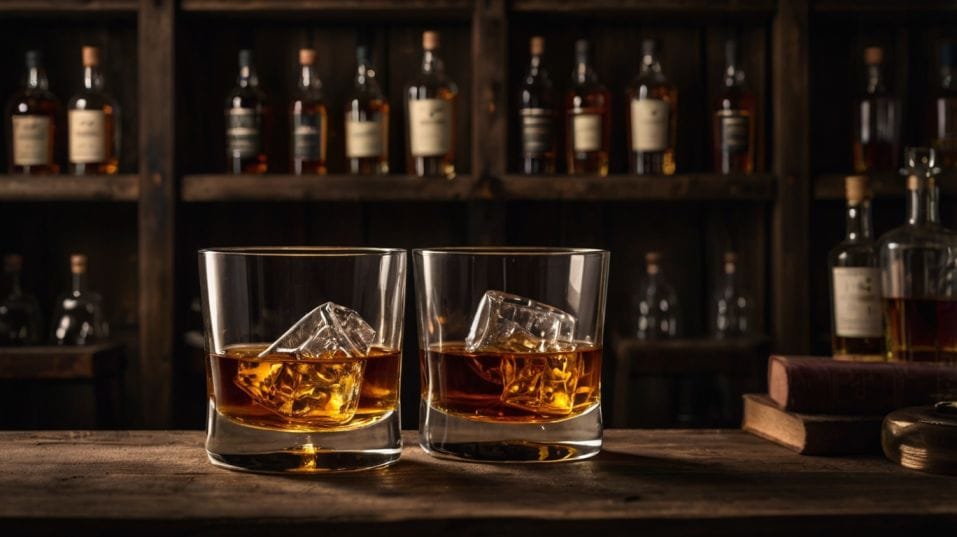The Easiest Way to Compare Two Whiskeys
Want to taste whiskey with real insight? Learn the simplest, most effective way to compare two whiskeys—and build confidence with every pour.

What’s the fastest way to actually get whiskey—not just sip it? Put two glasses side by side and ask one question: what’s different? No tasting wheels, no critic speak.
Just focused, direct comparison. It’s how patterns emerge, preferences form, and instincts sharpen.
If you’re early in your whiskey journey and want to learn with purpose, this is the move that changes everything. Simple setup, big impact—one sip at a time.
Why Side-by-Side Works
When you drink a whiskey on its own, it tends to dominate your frame of reference.
You’ll pick up on the boldest flavors, maybe jot down a few notes, and move on. But what you don’t get is contrast—and contrast is the foundation of perception.
Think about how we evaluate anything: art, food, even music. It’s always in relation to something else. Same goes for whiskey.
When you taste two whiskeys next to each other, you don’t just notice what they are—you notice what they aren’t. That’s where insight comes from.
You start to recognize that high-rye bourbons often come with a dry spice edge. That wheated bourbons tend to feel rounder, softer.
That sherry-finished Scotch leans sweet and fruity, while ex-bourbon casks let the malt shine through. These aren’t rules. They’re patterns. And the more you compare, the more patterns you start to see.

How to Set Up a Comparison
Keep it simple. You’re not hosting a masterclass. You’re running a personal lab. Two pours, side by side, served in identical glasses if you can. Skip the fancy stemware—short, tulip-shaped glasses work best, but any small tumbler will do.
Don’t taste after a heavy meal or when your palate’s shot. Don’t drink to relax—drink to learn. It doesn’t have to be serious, but it should be focused.
Start by smelling each glass. Don’t rush. Smell one, then the other, then back again. Notice which one jumps out. Which one draws you in. Now taste. A small sip. Let it sit. Swallow. Breathe.
Do the same with the second glass. Then repeat. Go back and forth a few times. As you do, you'll start to notice how each whiskey behaves. The mouthfeel.
The progression. The aftertaste. This is what pros call structure—and once you start to sense it, you can’t unsee it.
Choosing the Right Bottles
Don’t compare wildly different styles. You’ll learn less than you think. Comparing a bourbon to a smoky Islay Scotch might sound fun, but you’ll miss the nuances because the contrast is too extreme.
Instead, choose bottles that are similar in most ways and differ in just one. Try two bourbons from the same distillery—one bottled at standard proof, the other at cask strength.
Or two ryes: one younger and punchy, one older and more rounded. Compare a peated Scotch finished in wine casks to the same core expression without the finish.
These kinds of head-to-heads isolate one variable. That makes it easier to notice what that variable actually does.
Eventually, you’ll start creating your own comparisons. Want to understand how age affects flavor?
Line up a 6-year, 10-year, and 15-year version of the same whiskey. Curious about single malt regions? Try a Highland, Speyside, and Islay back to back. You’re not just tasting—you’re mapping the landscape.
What to Pay Attention To
Forget about scoring or ranking. Focus on what changes and how it affects your experience. Is one whiskey more aromatic?
Does one feel thinner or more oily on the tongue? Which one lingers longer? These aren’t trivia questions—they’re functional tools for developing taste.
Smell isn’t just about “notes”—it’s about depth, clarity, and warmth. Mouthfeel matters more than most beginners realize.
Finish tells you about balance and quality. A short, flat finish often means underdeveloped spirit or weak blending. A long, complex finish? That’s craftsmanship.
Keep your own notes. Not for show, for memory. Write down what you notice. Even simple observations like “glass A is sharper,” or “glass B tastes richer” will help you develop your vocabulary.
You don’t need to talk like a critic. Just get in the habit of paying attention and describing what you experience.
When It Gets Interesting
The real payoff comes when you start revisiting the same comparison over time. What you once thought was “too hot” might later feel balanced.
A whiskey you initially dismissed might start to shine. Your palate evolves with exposure. The more you compare, the better your memory becomes, and the easier it is to spot character, flaws, and value.
Eventually, you'll start tasting beyond the liquid. You'll get a feel for house styles, cask influences, blending decisions.
You’ll know what to expect from a label before you open it. You’ll trust your preferences and ignore the noise. This is how collectors build smarter and how drinkers develop taste that goes deeper than surface notes.
Final Thoughts
The easiest way to compare two whiskeys is also the smartest way to learn. Not by guessing, not by reading reviews, but by putting two glasses in front of you and asking: what’s different?
Do this often and you’ll get sharper. You’ll drink with intention. You’ll build a personal map of flavor, structure, and style—one that guides every future bottle you buy, trade, or pour.
So pick two whiskeys tonight. Not at random—on purpose. Taste them side by side. Take notes, or don’t. But pay attention. That’s how real whiskey knowledge starts—not with collecting bottles, but with comparing them.




